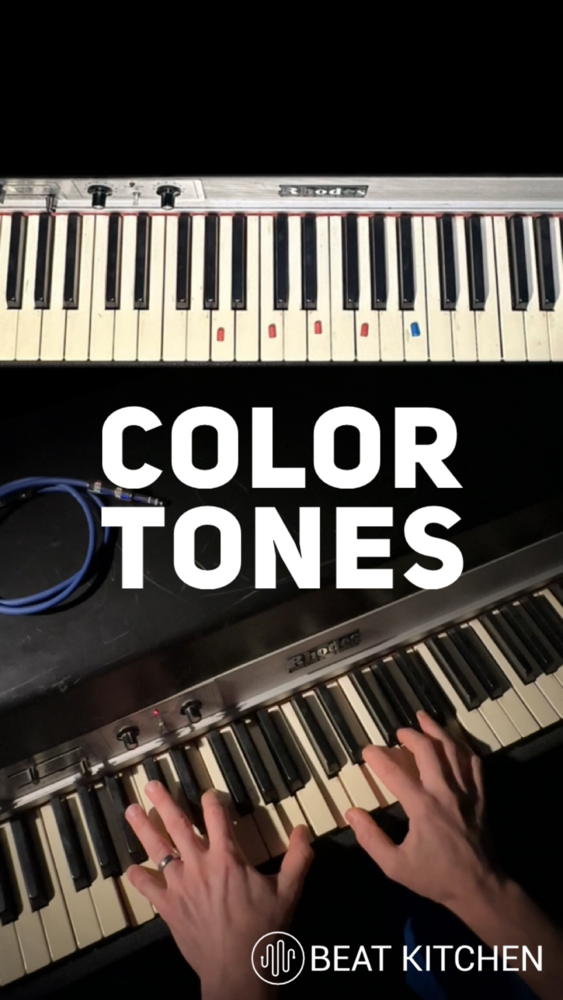The color tones in a chord tend to be the ones that create a little friction. Choosing them is a lot of fun, but consider how these notes are going to interact with the other chords in your song. Color tones can act like connective tissue between two points in harmony.
Go past the root, the third, and the fifth. We can usually find them in the upper extensions of the chord. And back down here, you can see how those notes are rubbing up against their neighbors.
In fact, this 9, 11, and 13 could also be thought of as a 2, a 4, and a 6. And these are a good place to start, because listen to how these notes glue together the chord shapes within the family of any given key. This major 7 becomes a 9 of this A minor chord, and it’s the 11 of this F before it falls into places the third of this G.
The 11 in this A minor chord becomes a 13 in the F, and it’s a 9 in this C, and so on. Look for the color notes, but land on the ones that make sense across the chord progressions of your song, and it will give you some really good stuff to play with. Musician Basics elective and keyboard skills is taught live at Beat Kitchen on our Discord, and if someone who belongs in one of those classes, share this post.

